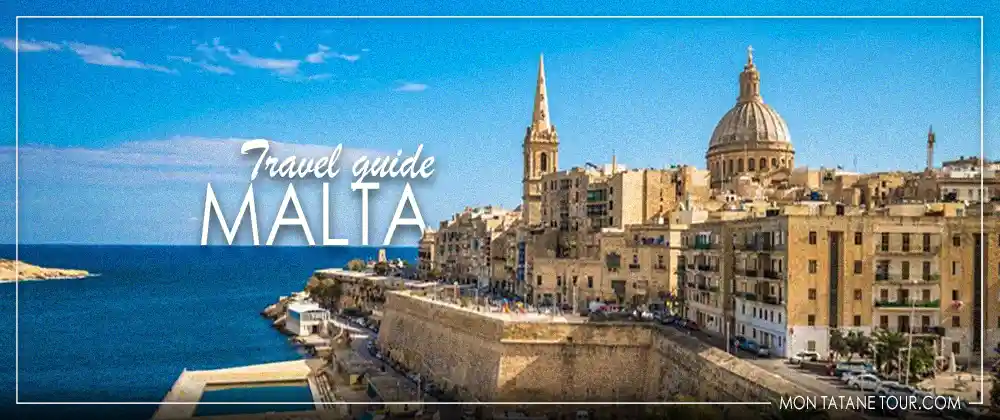Welcome aboard this comprehensive guide to “Malta travel guide”.
I’m Sarah (or Miss Tatane 😛), a travel enthusiast. I’m here to share my experiences and tips to help you make the most of your trip 😉.
Don’t forget to bookmark us if you’re planning to travel again! Our MTT site (yours) is constantly updated with new articles every week, as well as new destinations as we travel 😀

Malta travel guide – Must-see places
Visiting Malta means discovering this archipelago made up of 3 islands (Malta, Comino and Gozo) which is located in the middle of the Mediterranean about 400 km south of Sicily, it is the smallest state in the European Union but not the ugliest. If you have the chance to go there, take advantage of this article so as not to miss anything and let yourself be charmed by the beauty of the place.
The Barrakka gardens
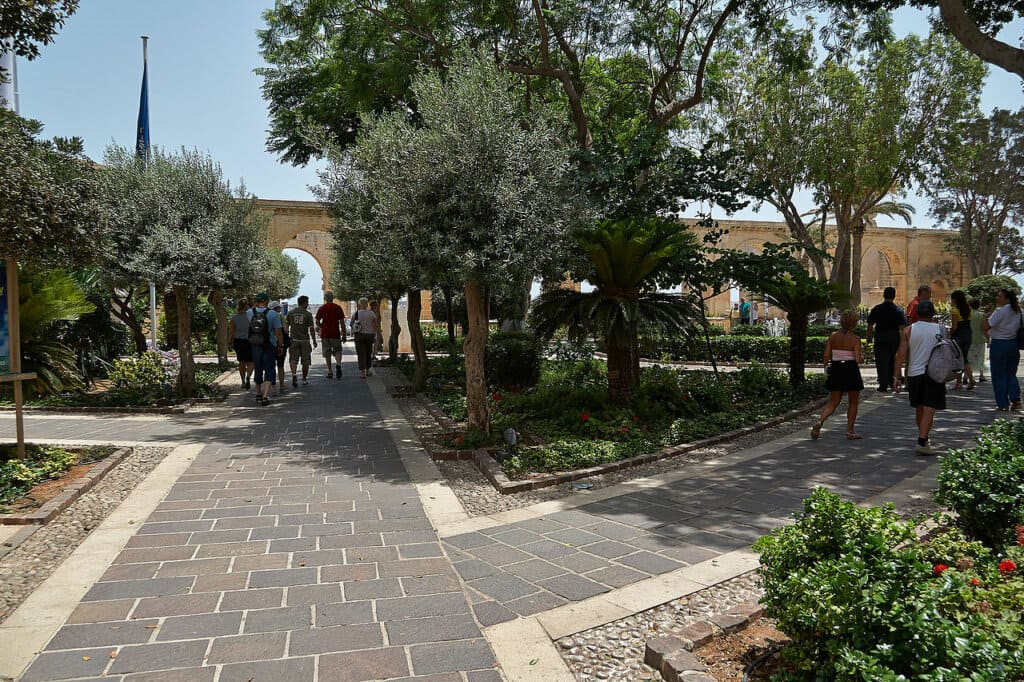
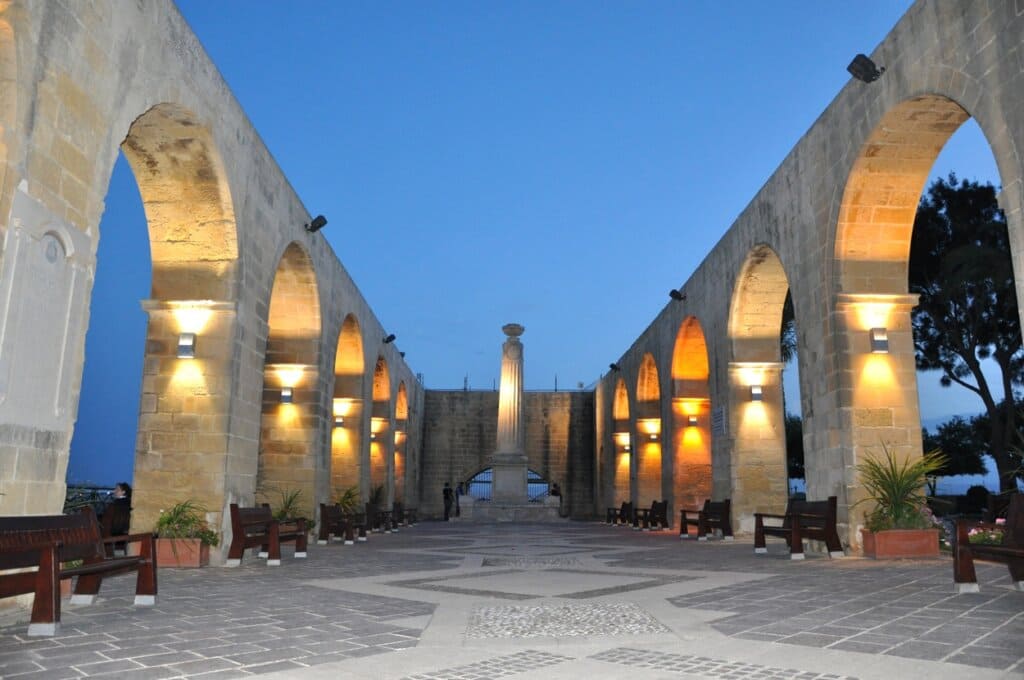
The Barrakka Gardens in Malta are a true green gem in the heart of the capital, offering stunning views and a peaceful ambiance for visitors seeking relaxation and natural beauty.
History and location
- Location. Located in the historic city of Valletta, Barrakka Gardens sits close to the city walls, offering panoramic views of the grand harbor and the three cities.
- Origins. These gardens were laid out in the 17th century for the knights of the Order of Saint John and have become a popular place of relaxation for locals and visitors.
Site highlights
- Panoramic view. Enjoy spectacular views of the grand harbour.
- Architecture and sculptures. Admire traditional Maltese architectural features.
Activities and practical details
- Relaxing walks. Stroll through the shaded paths and manicured lawns.
- Historical monuments. Explore historical monuments.
Useful information
- Access. Easily accessible on foot from many points in Valletta.
Why visit the Barrakka gardens?
- History and culture. Explore a site steeped in military and maritime history.
- Urban relaxation. Offers a green escape in the heart of Valletta.
- Photography. Capture breathtaking images of seascapes and manicured gardens.
Three cities of Malta
An authentic and historic place
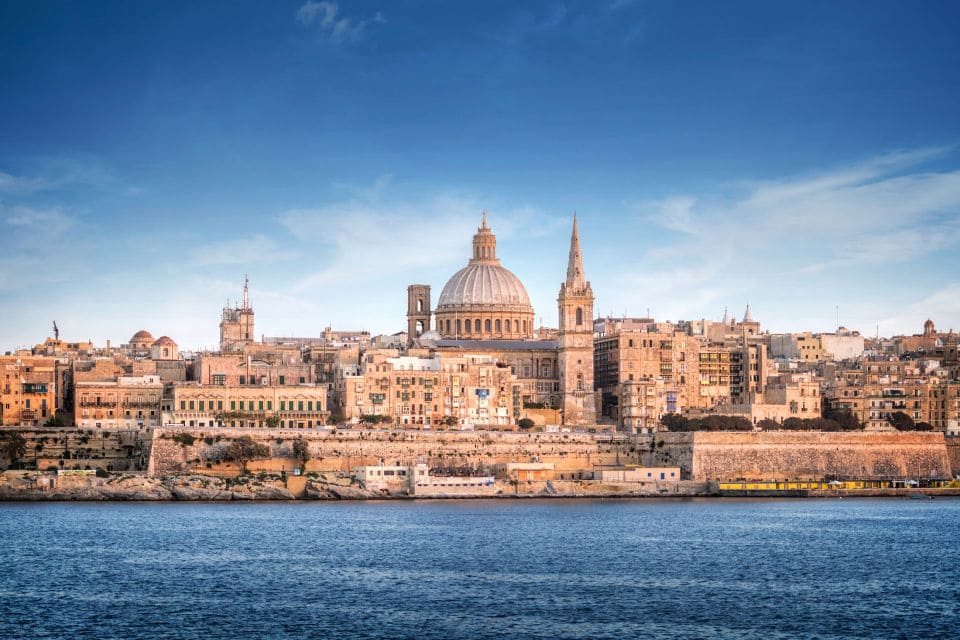
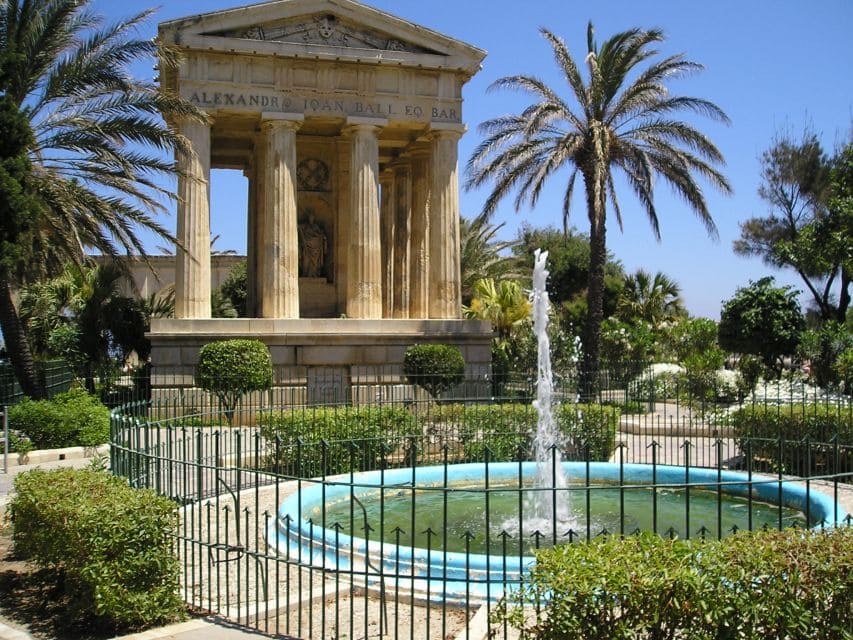
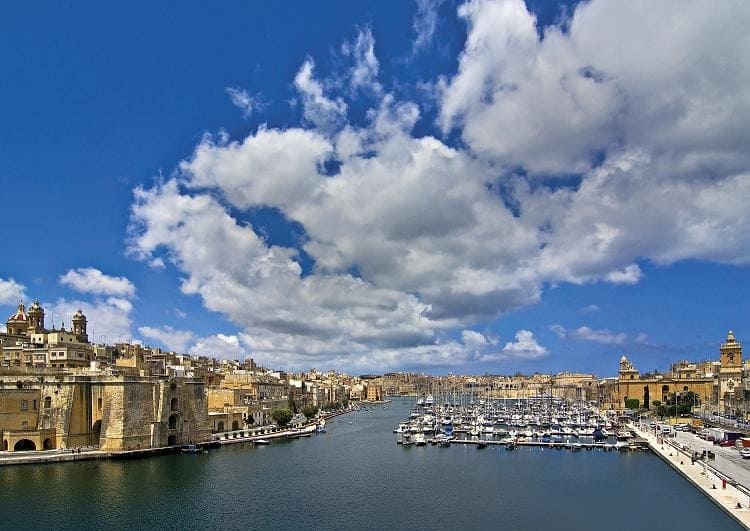
The Three Cities in Malta refer to three historic towns located opposite Valletta, the island’s capital, offering a captivating insight into Malta’s maritime and architectural history.
The three cities consist of:
- Vittoriosa (Birgu). It is the oldest of the three cities.
- Senglea (The Island). Situated just opposite Valletta, Senglea offers spectacular views of the Grand Harbour.
- Cospicua (Bormla) is a vibrant town with a rich maritime history, baroque churches and bustling streets.
Highlights to discover
- Fortifications. Explore the well-preserved defensive walls surrounding the Three Cities.
- Architecture. Admire traditional Maltese architecture, with its carved wooden balconies, ornate churches and charming squares.
- Museums and historic sites. Visit local museums like the Malta Maritime Museum in Vittoriosa.
Useful information
- Access. The three cities are easily accessible from Valletta by ferry, water taxi or even on foot for the more adventurous.
- Guided tour . Take a guided tour to learn about each city’s fascinating history and points of interest.
Why visit the three cities?
- History and culture . Explore centuries of Maltese maritime and military history in a picturesque, less crowded setting than Valletta.
- Panoramic views. Enjoy spectacular views of the large harbor and the ramparts.
- Local authenticity. Discover the daily life of the Maltese people far from the busier tourist areas, with an authentic and warm atmosphere.
Ggantija temples
A must-visit historic site in Gozo
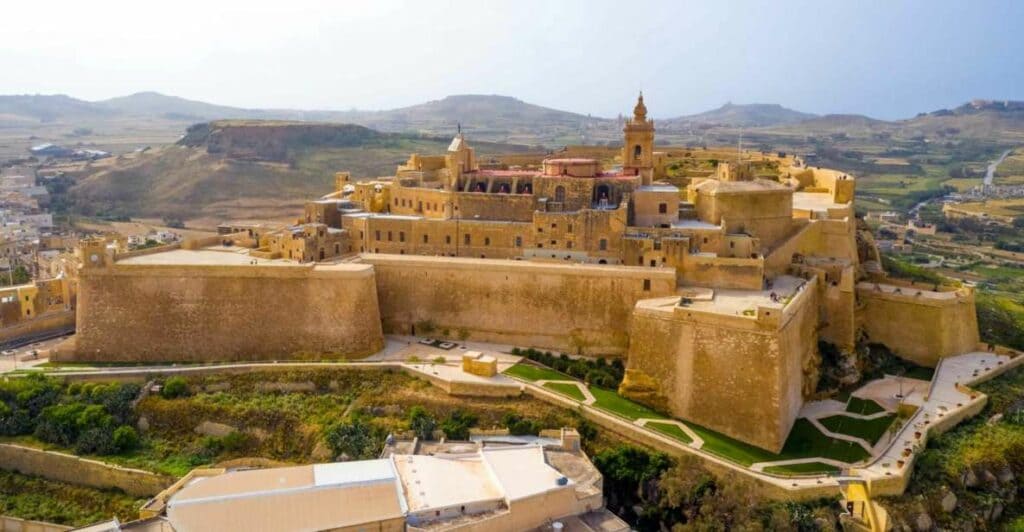
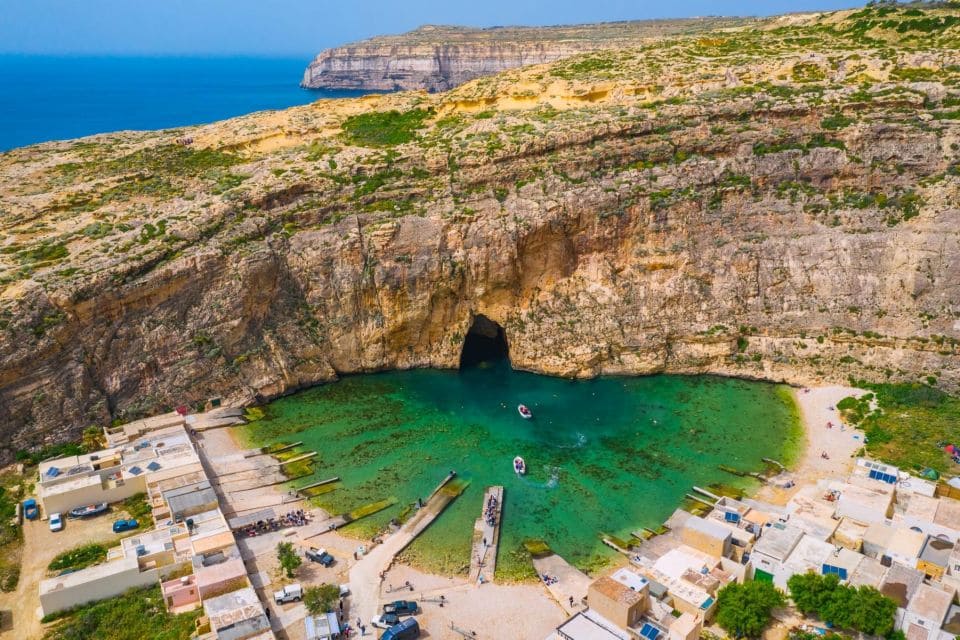
The Ggantija Temples in Malta are a fascinating testament to the island’s prehistoric engineering and spirituality, offering a deep dive into Malta’s ancient history.
History and significance
- Antiquity. Built between 3600 and 3000 BC. BC, the temples of Ggantija are among the oldest religious buildings in the world, even predating the pyramids of Egypt.
- Architecture. These megalithic temples are built of monumental stones, some weighing up to 50 tonnes, demonstrating advanced construction skills for the time.
main Features
- Structure. The temples are composed of two main structures, Ggantija North and Ggantija South, connected by a central courtyard, creating an impressive sacred complex.
- Rock art. Discover mysterious carvings and sculptures that adorn temple walls, depicting religious motifs and symbols of the era.
Useful information
- Access. The Ggantija Temples are accessible from several points on the island of Gozo, with public transport options and parking nearby.
- To get there, you can take bus number 307 or bus number 322 from Victoria Bus Terminal. The journey takes approximately 20 minutes and will take you to the “Ggantija Temples” stop. There is also free parking nearby if you prefer to drive there.
- Schedules. From June to October: every day from 9:00 a.m. to 6:00 p.m.
From November to May: every day from 9:00 a.m. to 5:00 p.m.
Why visit the temples of Ggantija?
- World Heritage. Listed as a UNESCO World Heritage Site, the Ggantija Temples offer a unique opportunity to discover an archaeological site of global importance.
- Ancient spirituality. Explore the spirituality and rituals of early Maltese civilizations, reflected in the architecture and art of the temples.
- Education and discovery. Perfect for history buffs and the curious of all ages, offering a deep dive into Malta’s prehistoric past.
Discover the magic of Gozo by visiting its iconic sites: ancient temples, legendary caves, breathtaking natural wonders and historic monuments. Soak up the island’s rich culture and breathtaking landscapes.
Private day tour in Gozo
For this excursion, pick-up is in Malta.
- Ancient wonders. Ggantija temples, Calypso cave with view of Ramla bay.
- Cultural riches. Basilica of Ta’ Pinu, windmill of Ta’ Kola, witnesses of history.
- Panoramic views. Dwejra, lunch at Il-Qbajjar, discovery of the citadel of Rabat.
- Hotel transfers are included
St. John’s co-Cathedral
Discover baroque splendor in Valletta
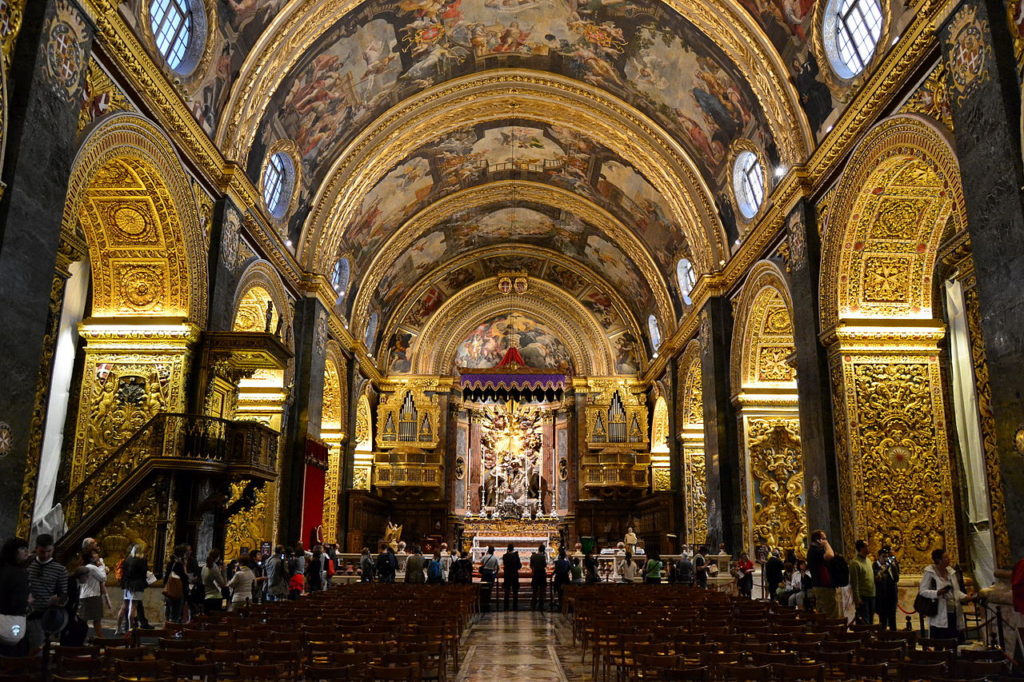
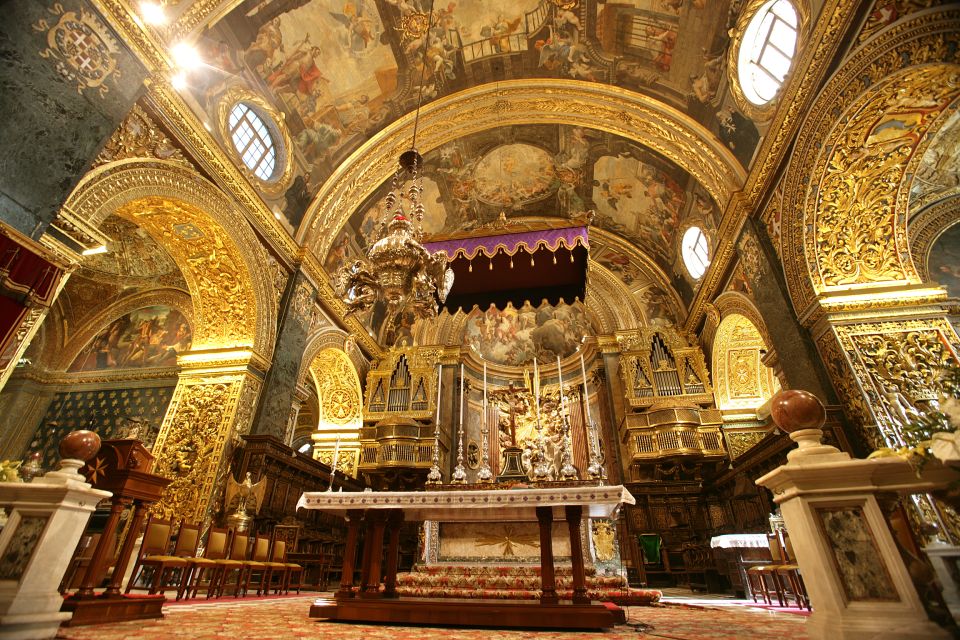
St. John’s Cathedral in Malta is an architectural masterpiece and an iconic place full of history and spirituality, located in the heart of Valletta.
History and architecture
- Origins. Built in the 16th century by the Knights of the Order of Saint John, the cathedral is dedicated to Saint John the Baptist and represents an exceptional example of Maltese Baroque architecture.
- Interior. Admirably decorated, the cathedral houses magnificent frescoes, ornate chapels and impressive architectural details, testifying to the refinement and piety of the knights.
Highlights to discover
- Oratory. Visit the Oratory of the Auvergne Language, a masterpiece of Baroque art, famous for its frescoes by Mattia Preti depicting the life of Saint John the Baptist.
- Chapel. Explore the Chapel of the Order of St. John, where the knights were buried, decorated with marble and artistic sculptures.
Useful information
- Access. Located in the center of Valletta, the cathedral is easily accessible on foot from various points in the city. I recommend taking buses 45, 46, or 130 and getting off at the City Gate stop if you don’t feel like walking.
- Schedules. Saint-Jean Cathedral is open to visitors every day. From 9 a.m. to 4:30 p.m.
Why visit Saint-Jean Cathedral?
- Cultural Heritage. Immerse yourself in the fascinating history of the Knights of the Order of St. John and learn about their impact on the island of Malta.
- Art and architecture. Appreciate the cathedral’s baroque architecture and unique artistic treasures, including works by Caravaggio.
- Spirituality. An active place of worship that offers insight into the faith and devotion of the people of Malta throughout the centuries.
The medieval city of Mdina
An enchanting getaway in Malta
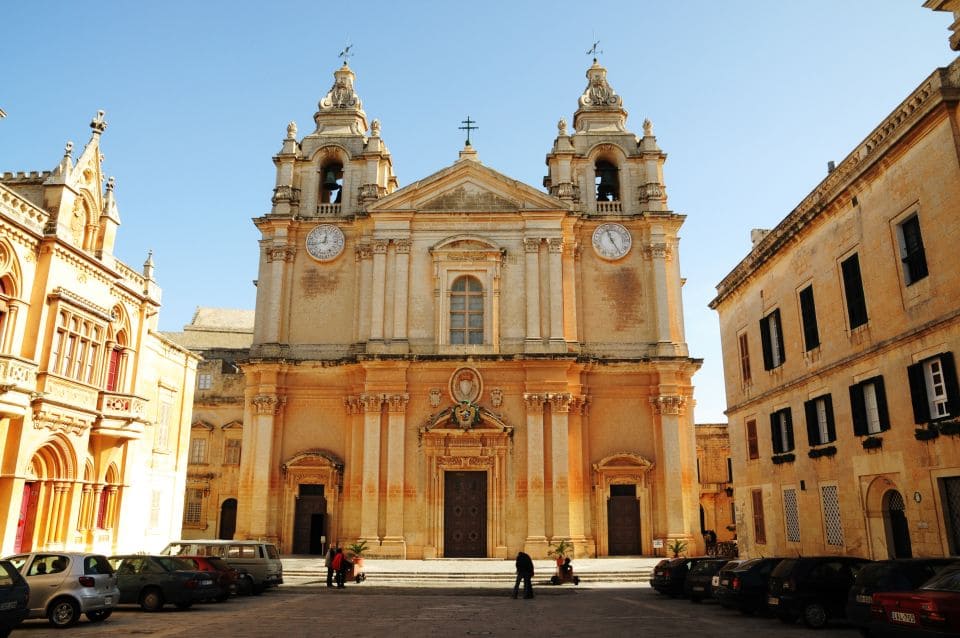
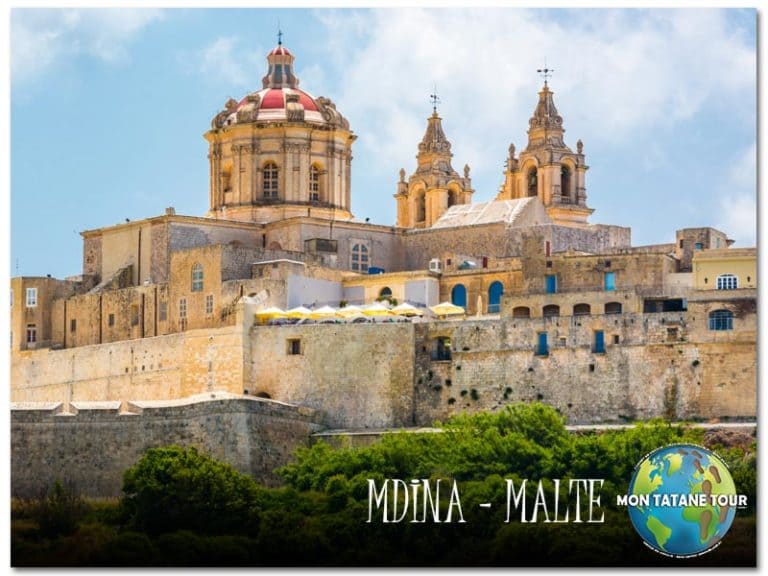
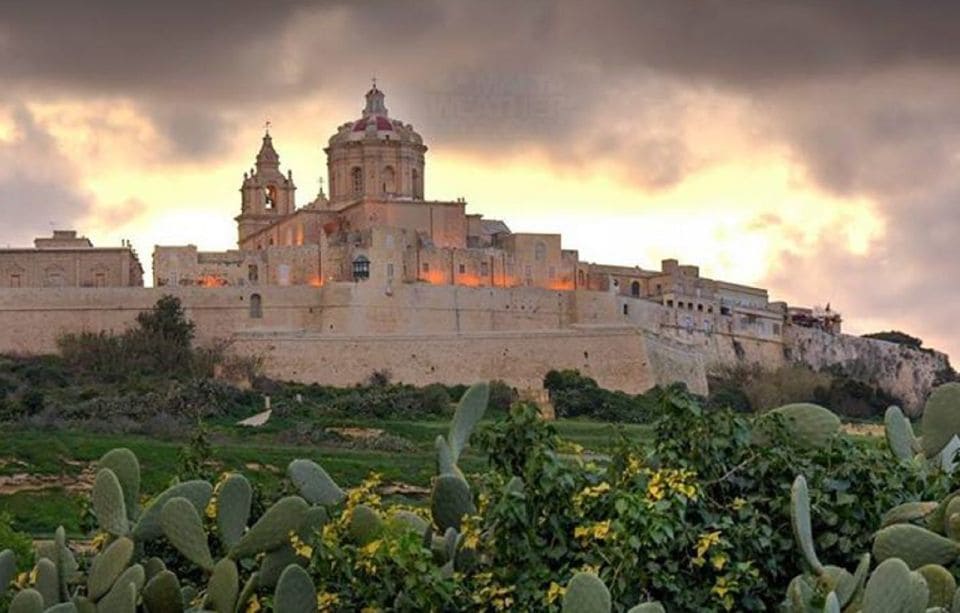
The medieval city of Mdina in Malta is a historic pearl nestled in the heart of the island, offering a captivating journey through time and an immersion in Maltese architecture and culture.
History and atmosphere
- Seniority. Founded over 4,000 years ago, Mdina is one of the oldest still inhabited cities in Europe, known for its rich heritage and picturesque setting.
- Nickname. Nicknamed the “Silent City,” Mdina is an oasis of calm where cars are not allowed, offering a preserved medieval atmosphere.
Highlights to explore
- Gates and ramparts. Pass through Mdina’s imposing gates and stroll along its well-preserved walls for panoramic views of the Maltese countryside.
- Palaces and mansions. Discover noble Maltese architecture with majestic palaces and well-kept mansions lining the narrow, winding streets.
Atmosphere and ambience
- Romantic walks. Stroll the cobblestone streets and admire the unique architecture, ideal for a romantic stroll or family exploration.
- Cafes and restaurants. Stop at quaint cafes to sample traditional Maltese pastries and enjoy views of the surrounding countryside.
Useful information
- Access. Mdina is accessible by car from various points on the island. Buses and guided tours are also available. To get there by bus, you can take bus 51 or 52 from Valletta. Entrance to the city is free!
Why visit Mdina?
- Cultural heritage. Explore a preserved medieval architectural treasure, with centuries of history around every corner.
- Unique atmosphere. Enjoy a tranquil atmosphere and timeless charm, far from the hustle and bustle of the city.
- Photography. Capture striking images of the winding streets and panoramic views from the ramparts.
The Ħal Saflieni Hypogeum
A must-visit archaeological site in Malta
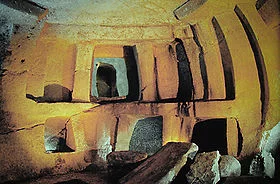
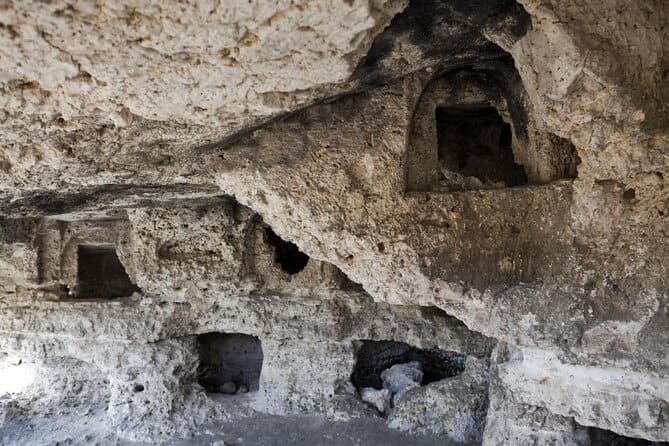
The Ħal Saflieni Hypogeum in Malta is a fascinating and mysterious archaeological site, recognized as one of the most important and best preserved prehistoric underground temples in the world.
Architecture et structure
- Construction. Made up of several underground levels, the Hypogeum features rooms and passages carved into the limestone rock, decorated with prehistoric motifs and sculptures.
- Art. The walls are decorated with geometric and anthropomorphic patterns, testifying to the advanced artistic skills of its builders.
On-site experience
- Guided tour. Due to its fragility and popularity, access to the Hypogeum is limited and often requires advance reservation for guided tours. Children aged 6 and under are prohibited.
- Virtual simulation. For those who cannot visit in person, a virtual simulation allows you to discover the interior and history of this extraordinary site.
Useful information
- Access. Located in Paola, near Valletta, access to the Hypogeum is by prior reservation due to its delicate conservation.
- Schedules. Visits from 9 a.m. to 5 p.m.
- Prohibition on taking photos
- Visit of one hour max. 35 euros per adult and 20 for 12-17 year olds.
The blue grotto

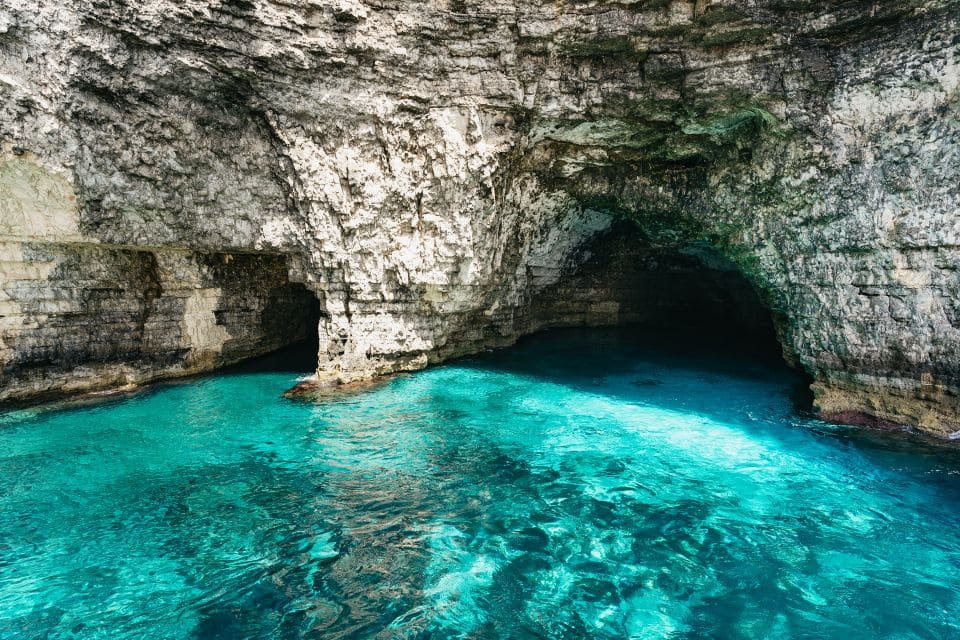
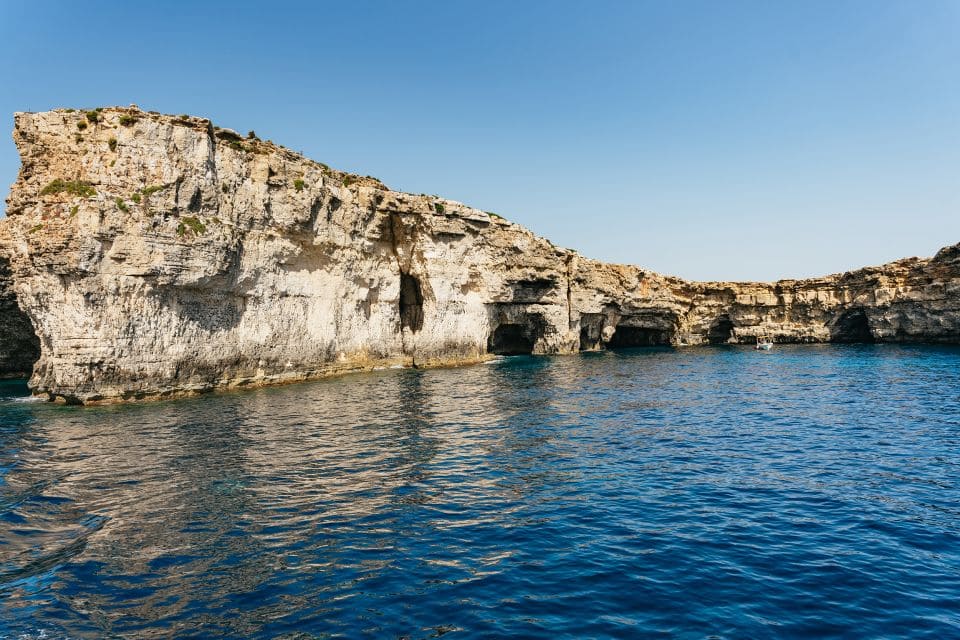
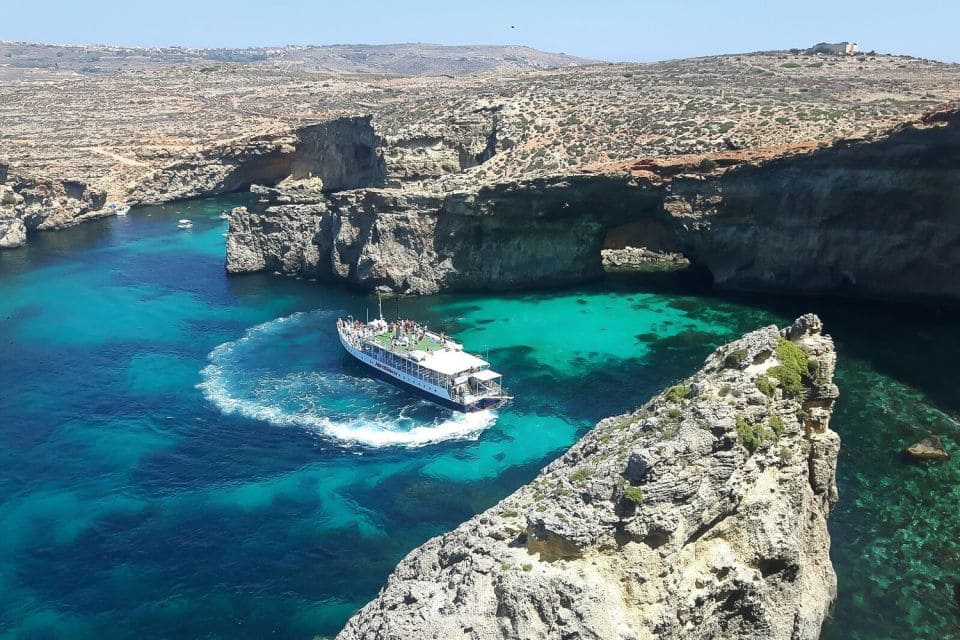
The Blue Grotto, or Blue Grotto, is a popular natural attraction on the south coast of Malta. I had the chance to visit it years ago and fell in love with the incredible beauty of this place.
Natural beauty and atmosphere
- Location. Nestled on the southern coast of the island of Malta, near the fishing village of Wied iż-Żurrieq, the Blue Cave is famous for its deep blue waters and natural caverns.
- Natural phenomenon. The characteristic color of the water is due to the refraction of light through the white, limestone walls of the cave, creating spectacular reflections and shades of blue and turquoise.
On-site experience
- Boat tour. The best way to experience the Blue Cave is on a boat trip from Wied iż-Żurrieq. Visitors can enter the caverns and admire the play of light and dazzling colors.
- Diving and snorkeling. For water sports enthusiasts, the Blue Cave also offers diving and snorkeling opportunities, allowing you to explore marine life and underwater geological formations.
Useful information
- Access. Accessible only by sea, boat trips depart regularly from Wied iż-Żurrieq, a short drive from Valletta and other tourist areas of Malta.
- Visit conditions. Tours may be affected by weather, so it is advisable to check local conditions before planning your visit.
Why visit the Blue Cave?
- Nature and relaxation. Enjoy a relaxing and immersive experience in the heart of Maltese nature, admiring one of the island’s most famous natural wonders.
- Cultural attraction. The Blue Cave is not only a place of natural beauty, but also an important cultural symbol of Malta, attracting visitors from all over the world for its unique ambience and marine vistas.
Gozo and Comino islands, blue lake and seacaves
⭐⭐⭐⭐
Explore Gozo and Comino on a full-day cruise from Bugibba. Swim in the turquoise waters of the Blue Lagoon, discover the main towns of Gozo, visit the sea caves of Comino, and slide down the immense water slide.
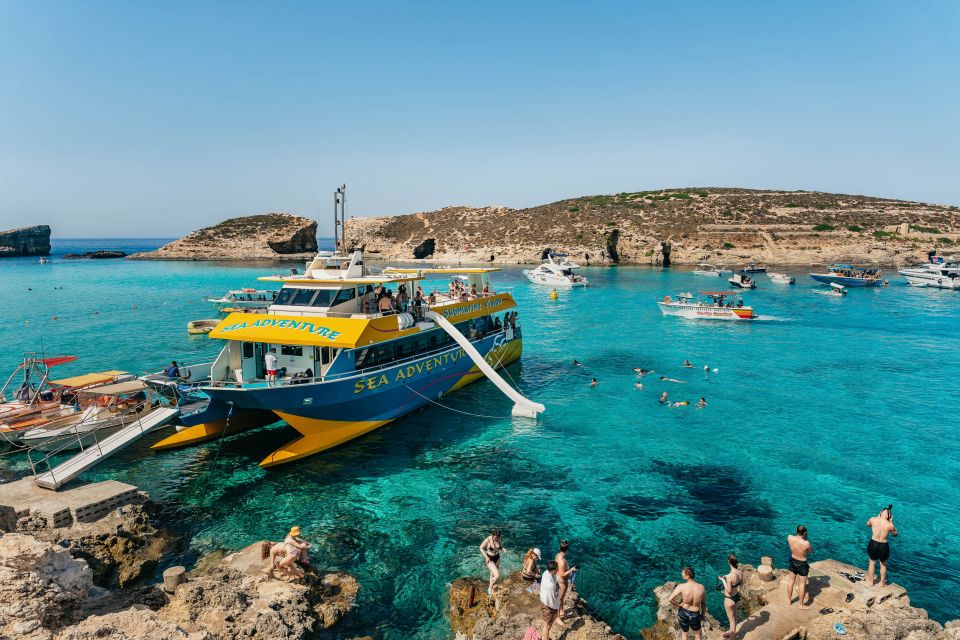
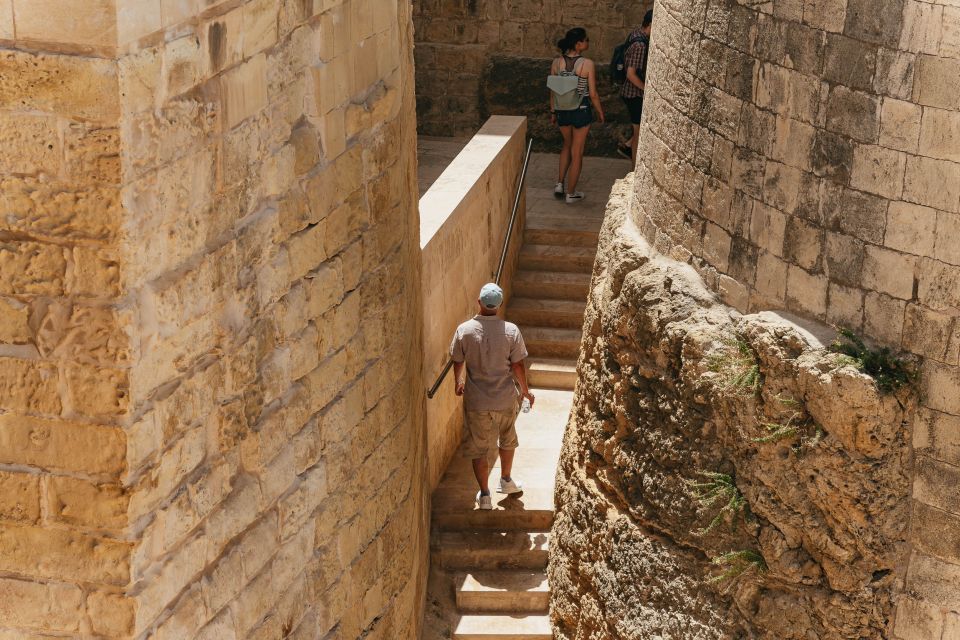
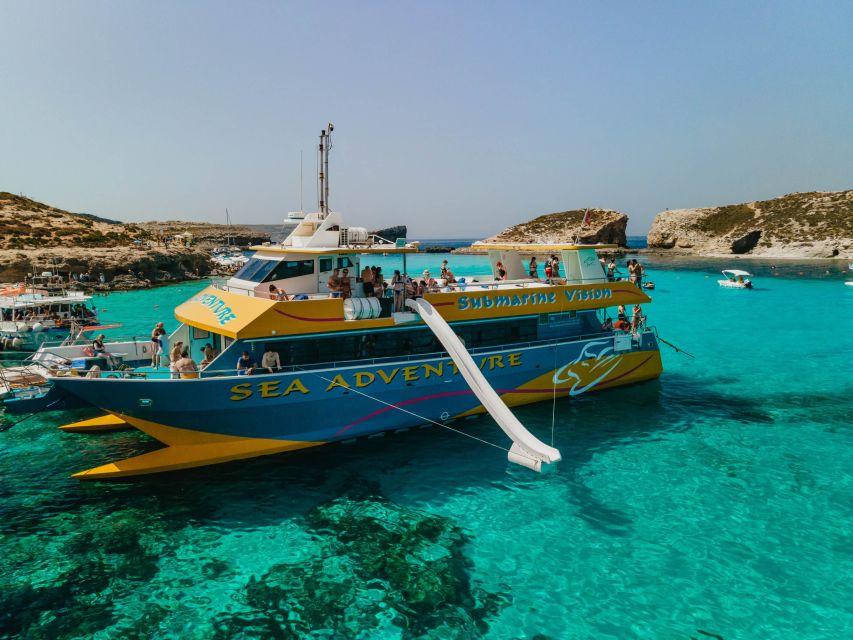
Balluta bay
Malta travel guide
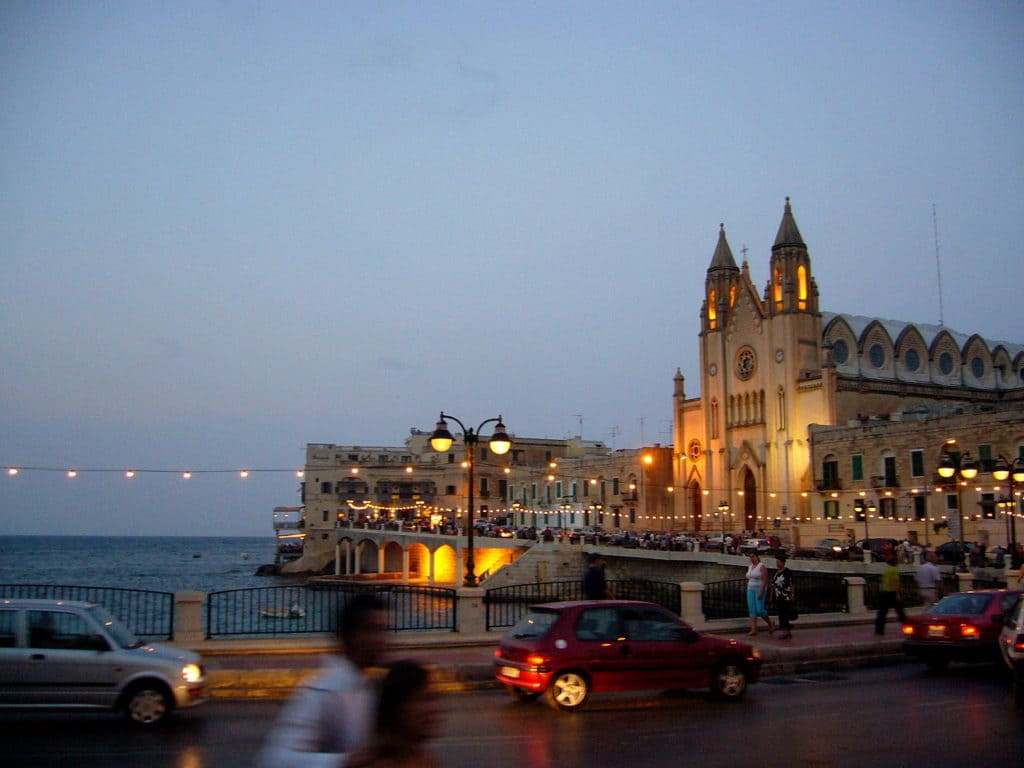
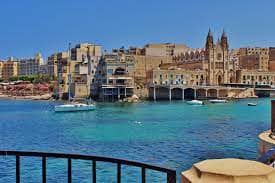
Balluta Bay in Malta is a picturesque coastal gem, offering a perfect combination of natural beauty, local charm and relaxing activities.
Natural setting
- Location. Located on the northeast coast of Malta, near Sliema and St Julian’s, Balluta Bay is renowned for its calm waters and idyllic setting.
- Beach and promenade. The bay is bordered by a pretty golden sandy beach, ideal for relaxing in the sun or taking a relaxing walk along the seafront.
Highlights to discover
- Church of the Immaculate Conception. Overlooking the bay, this baroque Catholic church offers remarkable architecture and a panoramic view of the Mediterranean Sea.
- Restaurants and cafes. Enjoy local and Mediterranean cuisine in the many restaurants and cafes along the promenade, offering picturesque views of the bay.
Recommended activities
- Nautical sports. The bay is suitable for swimming, snorkeling and other water activities, allowing visitors to enjoy the clear, shallow waters.
- Shopping and leisure. Explore the nearby boutiques and malls for souvenirs and local items, or relax at one of the nearby spas.
Useful information
- Access. Balluta Bay is easily accessible from Sliema and St Julian’s, with access by bus and car. There is also a regular ferry service to Valletta and other destinations in Malta. You can take buses 13, 14, 16, 45 or 237 from Valletta to get there.
- Schedules. Restaurants, cafes and shops have varied opening hours, but the bay itself is open all year round to enjoy its magnificent views and relaxed atmosphere.
Malta travel guide – La Valette center
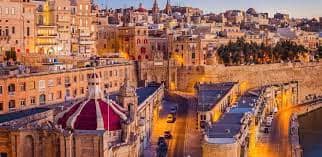
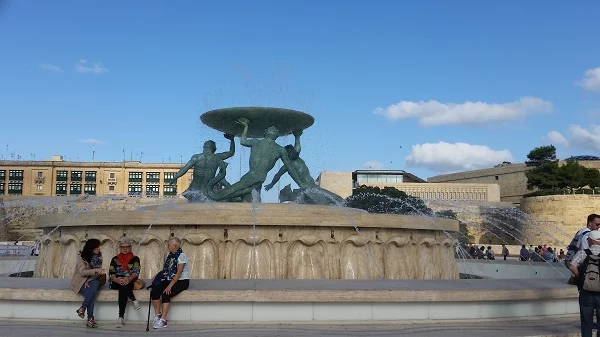
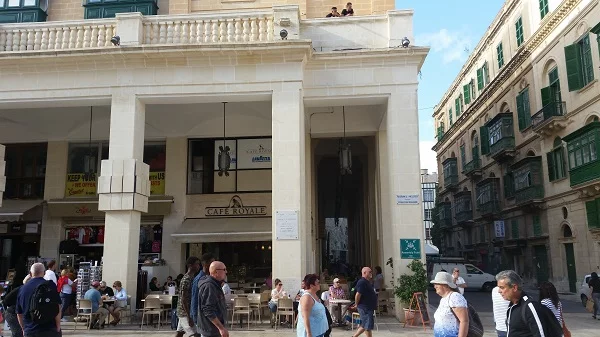
Valletta, the capital of Malta, is a historical and cultural treasure located in the heart of the Maltese archipelago, offering immersion in the island’s rich history and unique architectural beauty.
Architectural Heritage
- Fortifications. Valletta is surrounded by imposing walls, built by the Knights of the Order of Saint John in the 16th century to defend the island against Ottoman invasions.
- Streets and squares. Stroll through the narrow cobblestone streets, lined with Baroque and Renaissance buildings, bearing witness to the elegance and power of the Order of St. John.
Highlights to discover
- Masterly palace. Visit the Magistral Palace, now the seat of the Maltese Parliament, known for its frescoed rooms and elegant interior courtyards.
- Saint-Jean Cathedral. Explore the famous Baroque cathedral, home to the chapel dedicated to St. John the Baptist and impressive works of art, including a painting by Caravaggio.
Culture and leisure
- Museums. Discover the history of Malta at the National Museum of Archeology and the National Museum of Fine Arts, housing rich and varied collections.
- Theaters and performances. Attend theatrical and musical performances at Valletta’s historic theaters, offering an immersive cultural experience.
Daily life and atmosphere
- Markets and shops. Explore local markets like Valletta Market for fresh produce and artisan souvenirs, or browse the boutiques along the shopping streets.
- Cafes and restaurants. Relax in the lively cafes and enjoy traditional Maltese or international cuisine, while admiring views of the Grand Harbour.
Useful information
- Access. Valletta is easily accessible from all parts of Malta, with an efficient bus network and ferry connections from Sliema and other ports.
- Schedules. Hours of operation for attractions and businesses may vary, but most historical and cultural sites are open year-round for visitors. At each of my stops I never saw a business closed.
Valletta’s squares – Malta

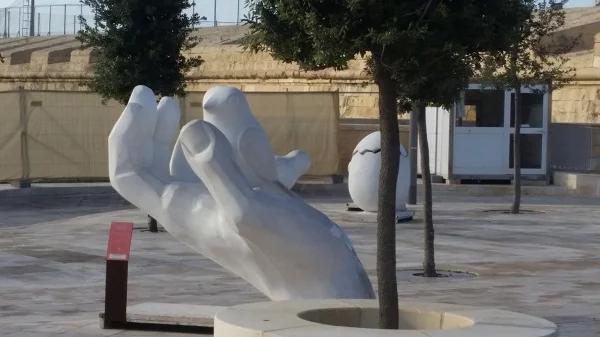
The squares of Valletta, the capital of Malta, are iconic spaces that bear witness to the history and daily life of this historic city.
Main square – Place de la République
- Nerve center. Republic Square is the vibrant heart of Valletta, surrounded by historic buildings, boutiques and cafes. It is here that cultural events and local festivities often take place.
- Fountain of Tritons. In the center of the square, the Tritons Fountain is an emblematic work which adds a majestic touch to the atmosphere of the square.
Saint Georges
- Historical. Place Saint-Georges is a place steeped in history, with the magnificent Saint-Georges Church dominating the landscape. It is a popular meeting place for locals and visitors.
- Architecture. The buildings surrounding the square show varied architecture, ranging from Baroque to Neoclassical, providing a picturesque view of Malta’s architectural history.
From Castile
- Panorama. Castile Square offers stunning views of the Grand Harbor and Valletta Harbour. It is also surrounded by important historical buildings, including the Palace of Castile.
- Statue. In the center of the square is an equestrian statue of John of Valletta, the city’s founder, paying homage to his legacy and influence on the island.
Weapons Square
- Official residence. The Place des Armes is dominated by the Palace of the Grand Master, the former official residence of the Grand Masters of the Order of Saint John. Today it is the seat of the office of the President of Malta.
- Ceremonies. The square is the site of official ceremonies and parades, offering a solemn and historic atmosphere.
Useful information
- Access. Valletta’s squares are easily accessible on foot from various points in the city. Buses and taxis are also available for getting around Malta.
Tarxien temples
A must-visit archaeological site in Malta
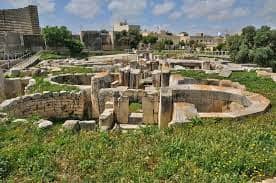
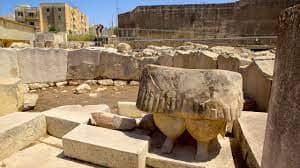
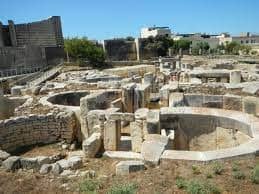
The Tarxien Temples in Malta are an impressive archaeological complex dating from the prehistoric period, offering a fascinating insight into the Neolithic civilization on the island.
History and significance
- Age. Built between 3600 and 2500 BC. B.C., the Tarxien Temples are among Malta’s oldest megalithic structures, testament to the ingenuity and sophistication of the island’s first inhabitants.
- Discovery. Rediscovered in 1914, the temples are now a UNESCO World Heritage Site for their archaeological and historical importance.
Architecture et design
- Structure. The temples are composed of several enclosures with massive stone walls, decorated with motifs and sculptures representing prehistoric animals and deities.
On-site experience
- Guided tour. Guided tours are available to offer detailed information on the history and significance of the temples, as well as the rites and beliefs of Malta’s early inhabitants.
Useful information
- Access. The Tarxien Temples are located near Tarxien, southeast of Valletta, and are easily accessible by car or bus from various points in Malta. To get there, you can take bus number 81 or 82 from Valletta.
- Schedules . Open every day from 9:00 a.m. to 5:00 p.m.
- Prices . Adults: €6 & young people aged 12 to 17 €4.50
Why Visit the Temples of Tarxien?
- Unique heritage. Explore a rare and well-preserved archaeological site, offering deep insight into the lives and beliefs of Malta’s ancient inhabitants.
- Education and discovery. An enriching experience for history and archeology lovers, allowing them to understand the evolution of human civilization on the island of Malta.
- Photography and natural beauty. Capture images of the impressive megalithic structures and appreciate the mystical atmosphere surrounding these ancient temples.
Malta travel guide – Dingli cliffs
Practical tips for a memorable experience
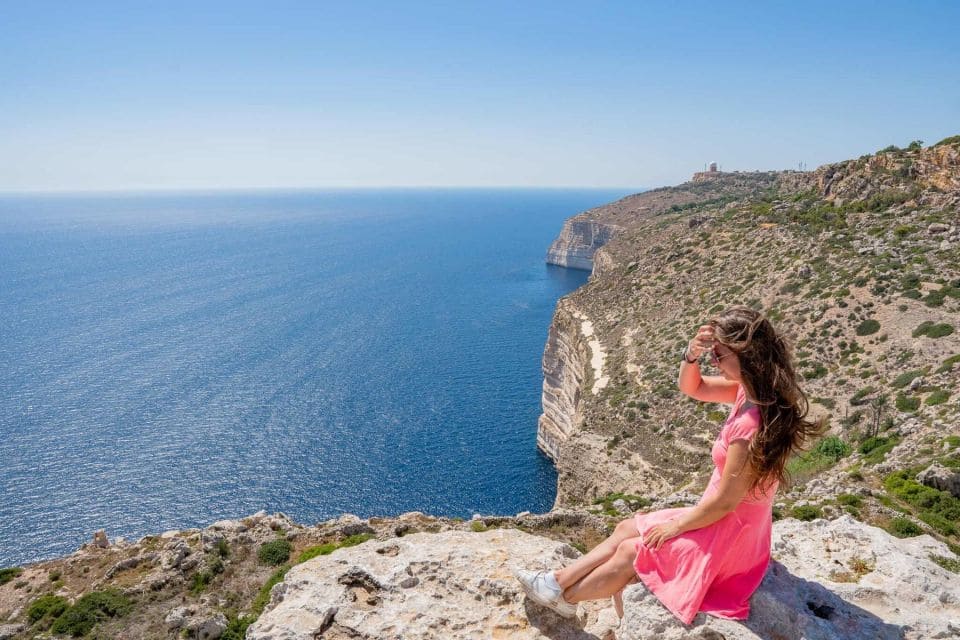
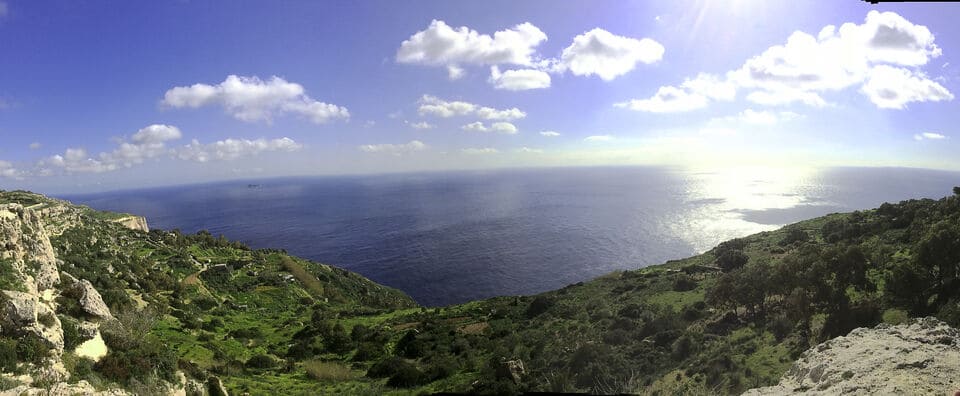
The Dingli Cliffs in Malta are among the most spectacular geological formations on the island, offering stunning panoramic views and an unforgettable natural experience.
Natural beauty and landscapes
- Location. Located on the west coast of Malta, near the village of Dingli, these cliffs rise more than 250 meters above sea level, offering breathtaking panoramas of the Mediterranean Sea.
- Walks. The Dingli Cliffs are a great place for walks and hikes, offering picturesque trails and panoramic views of the Maltese countryside.
Highlights to discover
- Chapel of Sainte-Marie Magdeleine. Dominating the cliffs, the small chapel of Sainte-Marie Magdeleine offers not only a place of worship, but also a magnificent view of the surrounding area.
- Fauna and flora. The cliffs are home to a variety of native plants and rich biodiversity, providing visitors with an opportunity to appreciate Mediterranean nature in all its splendor.
Recommended activities
- Photography. Capture panoramic views.
- Bird watching. The Dingli Cliffs are also a popular spot for observing migratory birds and local species.
Useful information
- Access. The Dingli Cliffs are accessible by car from Valletta and other parts of the island. It is also possible to take local buses to Dingli village and then walk to the cliffs. You can take buses 56, 201 or 202 from Valletta or Sliema. The journey takes approximately 45 minutes and will drop you off near the cliffs.
- Security. Due to their height and steep nature, caution is advised when visiting the cliffs, particularly with young children or in adverse weather conditions.
Malta travel guide – Popeye Village
A charming and authentic experience in Malta
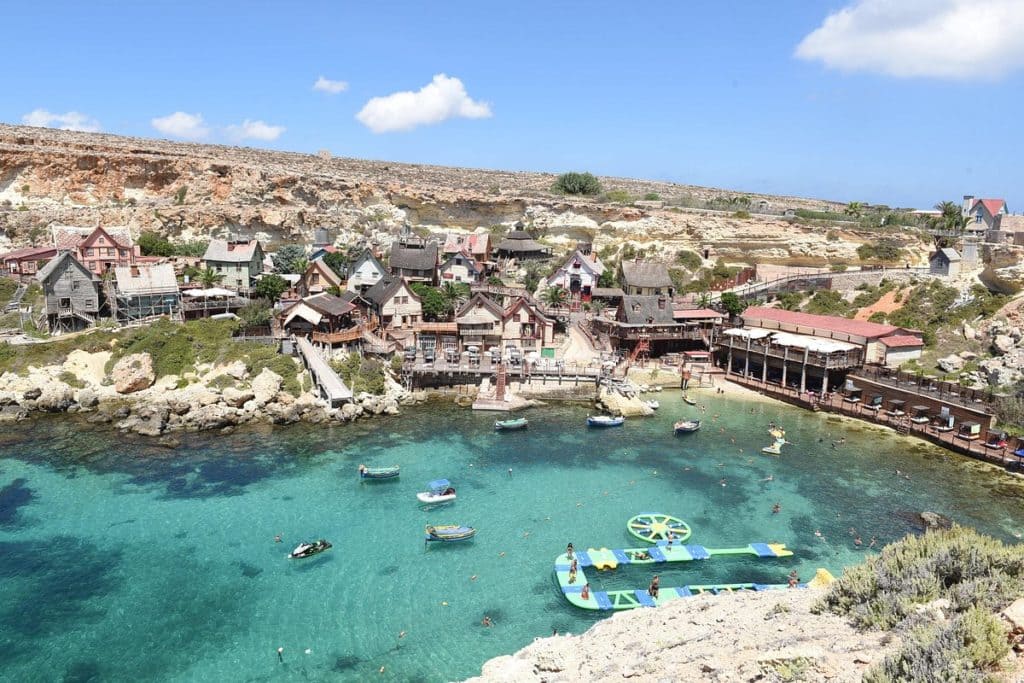
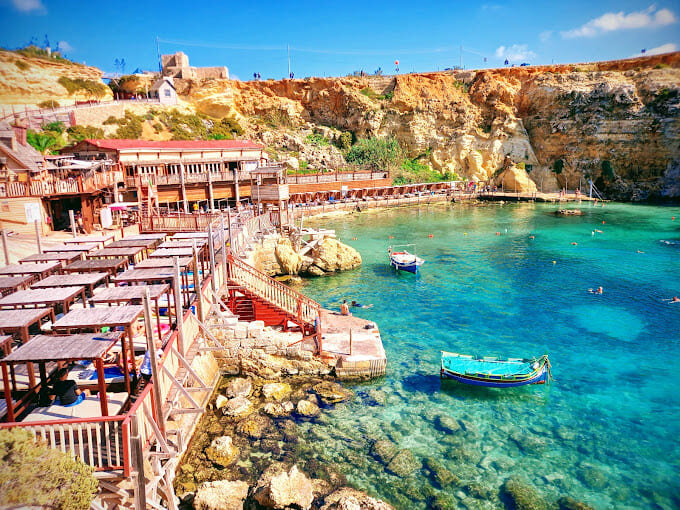
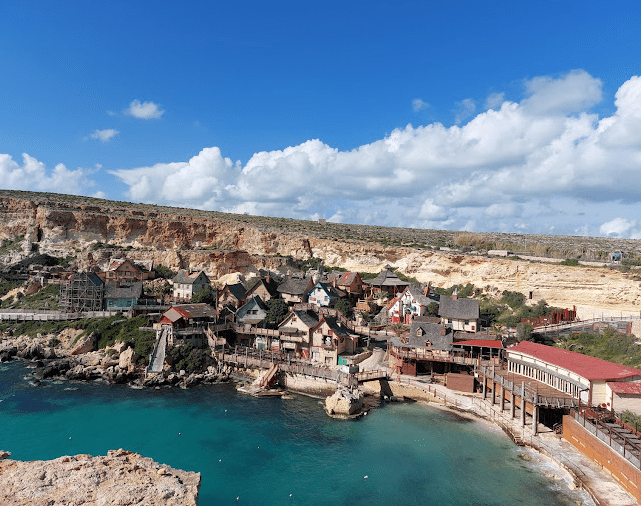
Popeye Village, also known as Sweethaven Village, is a unique attraction in Malta, famous for its connection to the 1980 film ‘Popeye’. Here’s what you can experience when visiting this picturesque place.
Historical context
- Creation. Built in 1979 for the filming of the film “Popeye” starring Robin Williams , the village has been preserved and transformed into a tourist attraction ever since.
- Atmosphere. The village retains the rustic and picturesque atmosphere of a Mediterranean fishing village, with colorful houses, narrow streets and sea views.
Attractions and activities
- Guided tours. Explore the village with guided tours that tell the story of the film, the sets used and filming anecdotes.
- Open-air theater. Attend open-air theatrical and musical performances, held periodically in the village.
Useful information
- Location. The village of Popeye is located in Anchor Bay, near Mellieha, on the northwest coast of Malta.
- Access. Accessible by car or bus from Valletta and other parts of the island. To get there, you can take bus number 12, 13, 16, or 109 from Valletta or Sliema, or bus number 222 from Mellieha
- Prices:
- Adult: 18 euros
- Child (3 to 12 years old): 14 euros
- Free for children under 3 years old
- Hours depending on the season:
- Spring/Autumn: 9:30 a.m. to 5:30 p.m.
- Summer: 10 a.m. to 6 p.m.
- Winter: 9:30 a.m. to 4:30 p.m.
- Duration of the visit . Allow at least 3 to 4 hours to fully enjoy Popeye’s Village, exploring the film’s sets and participating in the various activities offered.
- Blu Beach Club. Not to be missed, Blu Beach Club offers a divine dining experience with varied dishes priced from 5 to 20 euros on average, all while offering spectacular views.
Why visit Popeye’s Village?
- Originality. Discover a one-of-a-kind venue, built for a cult film and preserved as a charming tourist attraction.
- Relaxation and entertainment. Enjoy a leisurely day strolling through the village, savoring the Mediterranean atmosphere and having fun with activities for the whole family.

What to do in Malta?
The best activities in Malta

Where to swim?
The most beaches in Malta
Gozo beaches
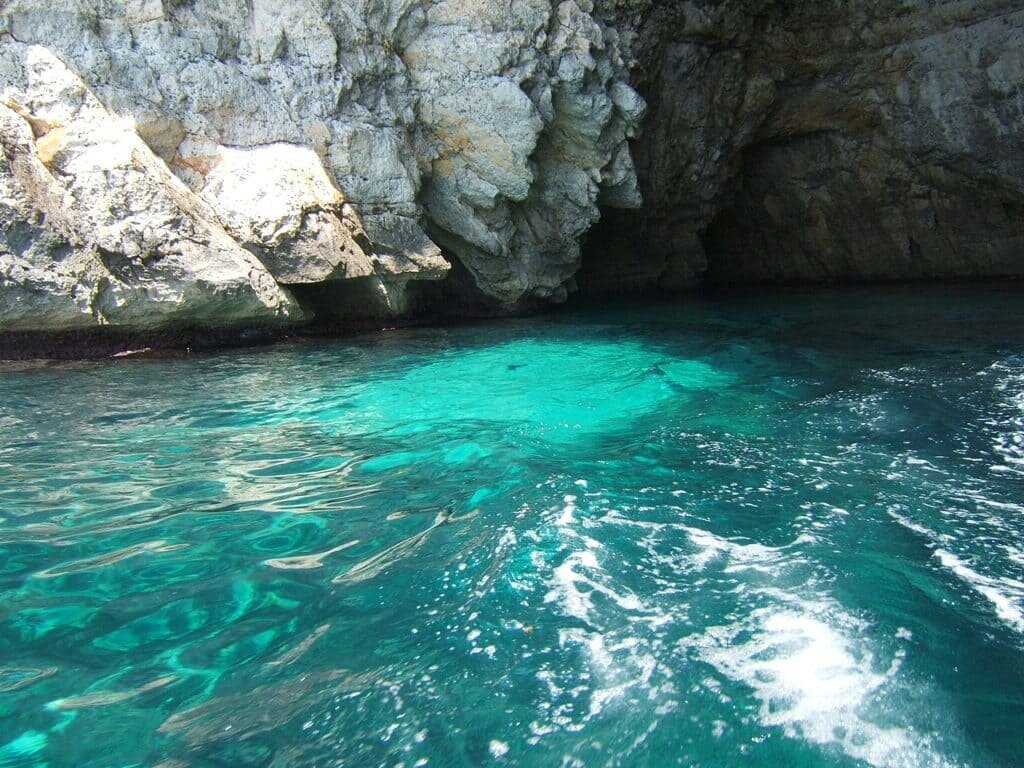
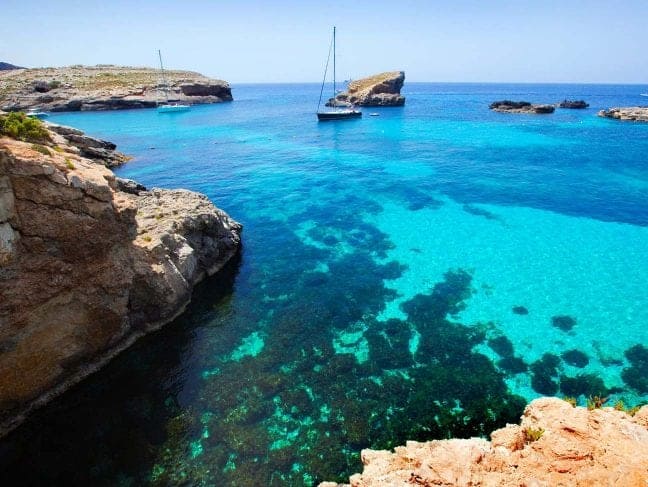
The beaches of Gozo, just 4 km from Malta, are for me the most beautiful in the archipelago. Despite their popularity, it is still possible to find a quiet corner on these 5 to 6 beaches spread across the island.
With more than a dozen cruises under my belt during my fifteen trips to Malta, I can say without hesitation that the cruise to Gozo is an unmissable experience. You will discover breathtaking landscapes and memorable moments at every turn. Be sure to book early, as this tour is in high demand and places fill up quickly.
Malta Paradise Bay
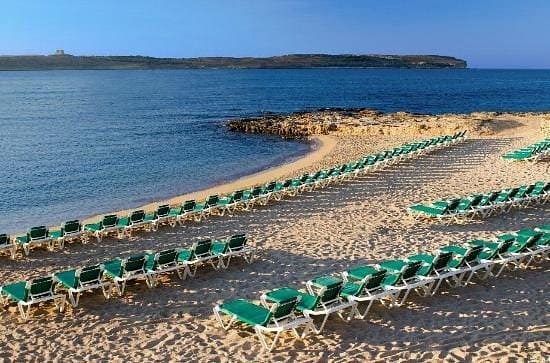
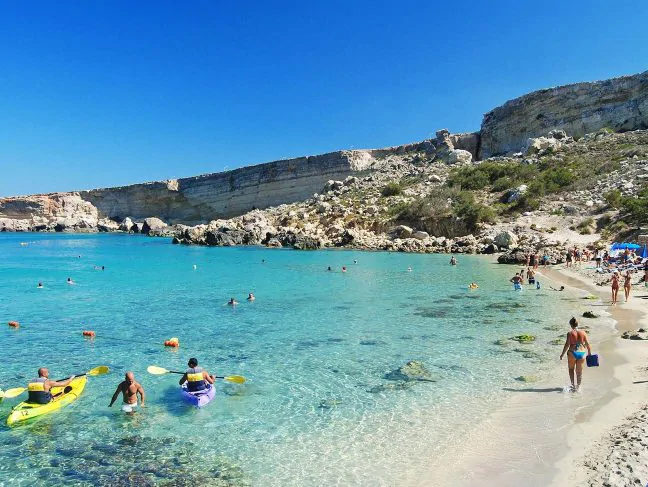
To get there, you can take bus number 101 from Cirkewwa Bus Terminus. You’ll disembark at the “Paradise Bay” stop, which is just steps away from the beach.
The beach itself is beautiful, with crystal-clear waters and a stunning view of the Mediterranean Sea. There are also sunbeds and umbrellas available for rent if you want to relax and soak up the sun. If you prefer a more active activity, you can rent a boat or go scuba diving.
In addition to the beach, there’s an on-site restaurant where you can enjoy delicious local dishes. I personally tried the fresh seafood, and it was incredibly tasty. If you’re looking for a place to spend a relaxing day with family or friends, Paradise Bay is the perfect spot.
Ghadira Bay
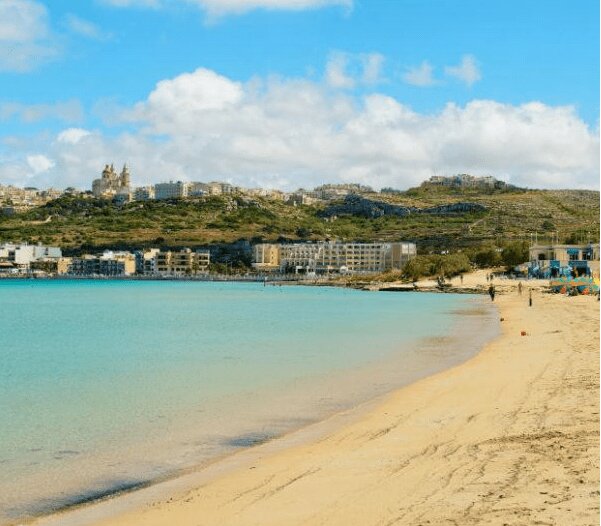
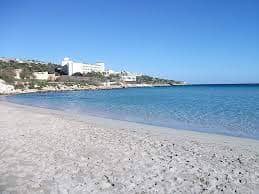
To get there, you can take buses 41, 42, 221, or 222, which stop right next to the beach.
Upon arrival, I was struck by the beauty of the bay. The turquoise water is crystal clear, and the surrounding cliffs offer stunning views. There are plenty of sunbeds and loungers available for rent, as well as showers and toilets on-site.
I really appreciated that there were various options for entertainment, such as water sports and food stalls offering delicious local cuisine. I was also impressed by the cleanliness of the beach and its surroundings.
Ramla Bay
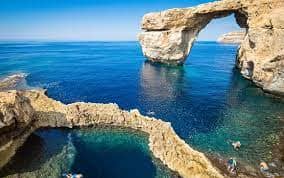
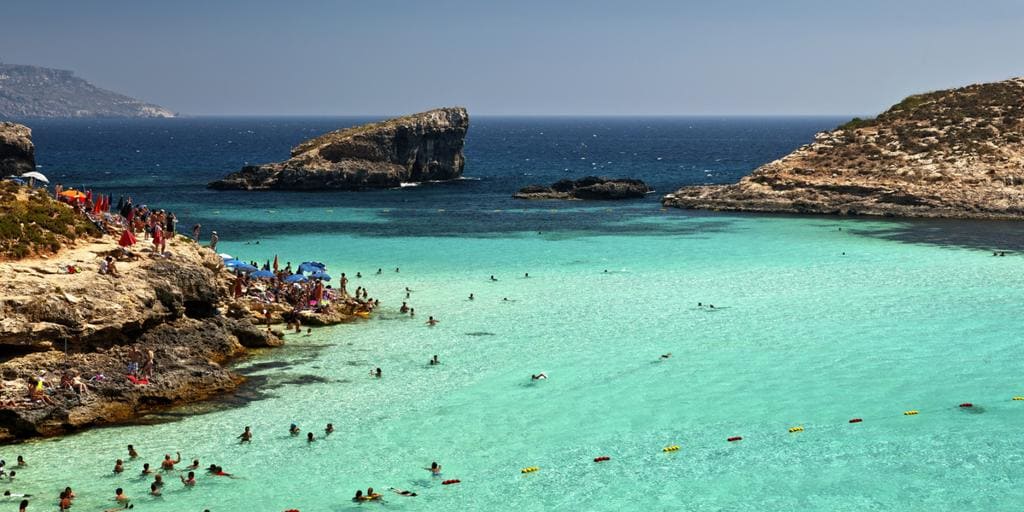
I visited Ramla Bay during my trip to Malta and was enchanted by its natural beauty. To get there, simply take bus number 322 or 306 from the main bus terminus in Malta and get off at the “Ramla” stop in Gozo.
Upon arrival, I was struck by the golden sand of the beach, which is one of Malta’s most beautiful. In addition to the beach, there’s a beautiful green valley where you can stroll and enjoy stunning sea views. I also visited the Calypso Cave, which is located nearby and is worth a visit. All in all, I had an amazing day at Ramla Bay, and I highly recommend this destination to anyone visiting Malta.
Sliema beach in Malta

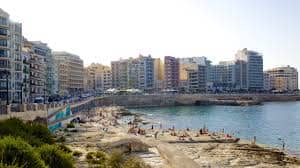
If you’re looking for an easily accessible beach in Malta, look no further than Sliema Beach. I took bus number 202 to get there, and it dropped me off right next to the beach. I was immediately impressed by the beach’s beauty, with its golden sand and crystal-clear waters.
But there’s much more to see than just the beach. The palm tree-lined streets are perfect for leisurely walks and enjoying the relaxed atmosphere of Sliema. I also visited Fort Tigné, located just a few minutes’ walk from the beach. It was incredible to see the history of Malta unfold before my eyes.
All in all, I really enjoyed my time at Sliema Beach. It was easily accessible by public transport, and there was so much to see and do around the beach itself.

Where to stay in Malta
Areas to sleep in Malta
In Malta, there are several interesting neighborhoods to stay in, each offering their own characteristics and attractions. Here are some suggestions for neighborhoods where you might consider staying during your stay in Malta.
Valletta
- Why choose. Malta’s historic capital is rich in baroque architecture, fascinating museums and picturesque lanes. It is the cultural heart of the island, offering total immersion in Maltese history.
- Strong points. Palace of the Grand Masters, St. John’s Co-Cathedral, Upper Barrakka Gardens.
- Ideal for. History lovers, culture lovers and those who want to be at the heart of the action.
Sliema and St Julian’s
- Why choose. These neighborhoods are renowned for their vibrant nightlife, stylish boutiques and spectacular sea views. Ideal for those seeking both relaxation and vibrancy.
- Strong points. Sliema promenade, Paceville (club district), sea cruises.
- Ideal for. Night owls, shopping enthusiasts and those who enjoy seaside activities.
Medina
- Why choose. The ancient capital of Malta, Mdina is a medieval walled town nestled on top of a hill, offering a romantic atmosphere and stunning views.
- Strong points. Palazzo Falson Historic House Museum, St. Paul’s Cathedral, picturesque cobblestone streets.
- Ideal for. Couples seeking tranquility, lovers of medieval architecture and urban explorers.
Marsaxlokk
- Why choose. This picturesque fishing village is famous for its colorful fish market, its colorful traditional boats (the Luzzu) and its authentic atmosphere.
- Strong points . Marsaxlokk market, walks along the seafront, cooking with freshly caught seafood.
- Ideal for. Seafood lovers, photographers and those looking for an authentic local experience.
Gozo (neighboring island of Malta)
- Why choose. Gozo offers a more leisurely pace of life and unspoiled nature with its green hills, secluded coves and traditional villages.
- Strong points. The Citadel in Victoria, Ramla Bay beach, Azure Window.
- Ideal for. Travelers looking for nature, tranquility and discovery off the beaten track.

Getting around in Malta
- Malta public transport bus network: Explore Malta on comfortable, air-conditioned buses offering affordable fares, starting at €2 for a one-way trip. Bus routes cover the entire island, making it easy to travel to historic cities like Valletta and Birgu.
- Taxis: Enjoy reasonable rates, averaging around €15 for a 10 km journey.
- Horse-drawn carriage ride: For a unique experience, opt for a horse-drawn carriage ride in Malta. Prices vary depending on the duration, with an average of €50 per hour. A romantic option for exploring the island’s historic streets while ensuring the well-being of the animals.
- Hop-on Hop-off bus: See Malta from a panoramic bus and hop on and off at your leisure to explore tourist attractions. Prices are around €20 for a day.
- Car rental: Explore the island at your own pace with car rental, starting at approximately €20 per day for a compact car.
- Buses: Fare: €1.50 per ticket (winter), €2 (summer). Night bus: €3 (from 23:00 to 05:00).

Practical information
- The official language of Malta is Maltese, but you can also communicate in English.
- You’ll use euros on the island, so make sure to have some with you.
- Malta is an affordable destination for travelers, with prices significantly lower than major European capitals like Paris, Barcelona, or London. However, beware of some scammers who take advantage of tourists, including unofficial taxi drivers and carriage drivers.
- To enter Malta, a simple ID card is sufficient; you don’t need a passport!
- If you plan to rent a car on-site, note that driving is on the left side of the road, like in London. If you’re accustomed to right-hand driving, it may take some time to get used to it.
- Finally, it’s important to know the best season to visit Malta. In general, the months of April to June and September to November offer the most pleasant temperatures and lower tourist crowds. Summer can be sweltering, while winter tends to be rainy.
I hope these tips will be helpful in planning your trip to Malta.

Homosexuality
LGBTQ+ Friendly
I’m always attentive to the acceptance of the LGBTQ+ community in the countries I visit, including Malta. I’m delighted to note that Malta is a very welcoming country for the LGBTQ+ community.
In 2017, the country became the first European country to ban conversion therapy, a significant step in protecting the rights of LGBTQ+ individuals.
Additionally, Malta has a lively LGBTQ+ nightlife scene, with clubs and bars in cities like Valletta, St. Julian’s, and Paceville. Malta Pride is also a significant annual event that attracts visitors from around the world.
Here are some LGBTQ+ establishments:
- La Klozet club: A gay nightclub in Paceville with a lively atmosphere and a dance floor.
- The Birdcage lounge bar: An LGBTQ+ bar in St. Julian’s with a pleasant outdoor terrace.
- Michelangelo club lounge: A gay bar and nightclub in Valletta, known for its house music and elegant ambiance.
- Tom bar: A gay bar in Sliema with a friendly atmosphere and delicious cocktails.
- So city club: A nightclub in Paceville that regularly hosts events for the LGBTQ+ community.
Cruise stopovers in the Mediterranean
Detailed stopovers port by port
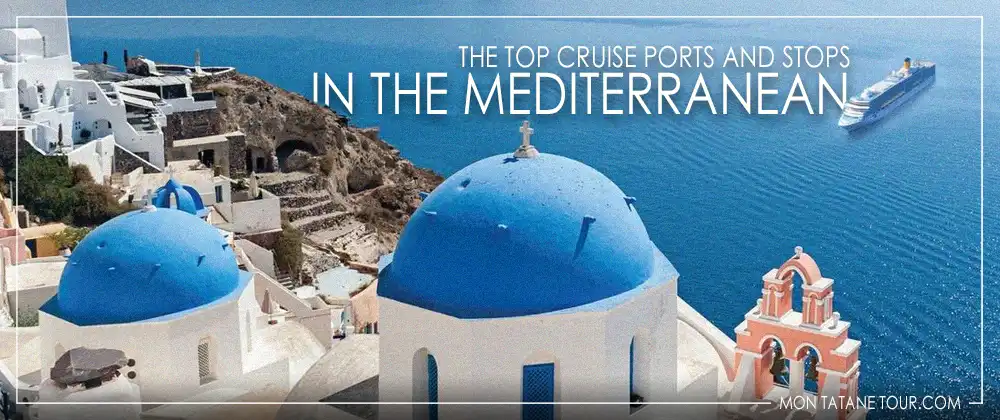
Around the world

In the Caribbean
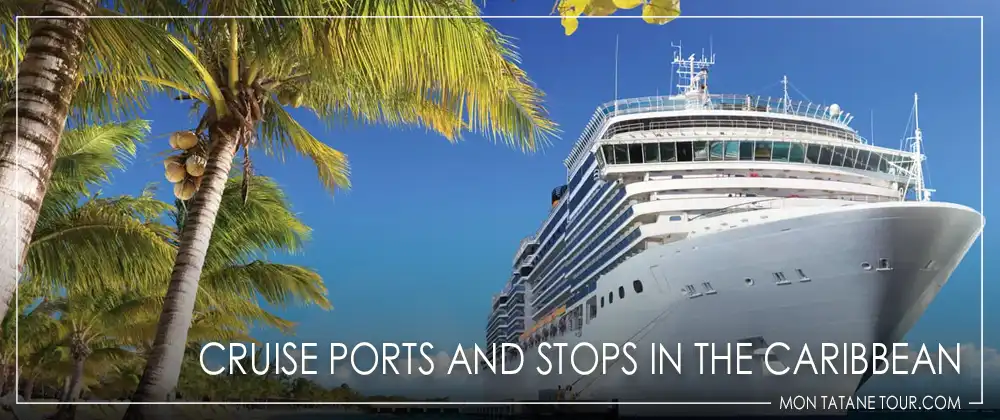
In North America

In the Fjords

Cruise guide

MTT wishes you the most wonderful stay, and enjoy your time!


